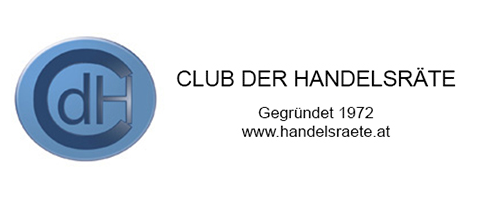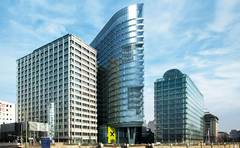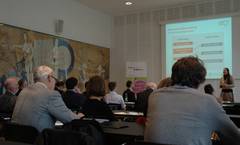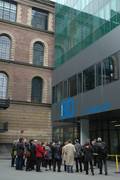TU Wien
Technical University of Vienna: Highlights of Austrian Energy Efficient Building Technology
Our event for March was a programme organised for us by the Energy Economics Group of the Technical University of Vienna (TU Wien). Host Dipl. Ing. Raphael Bointner welcomed the trade delegates at the TU main building and served as a guide for the afternoon, which included presentations on the subject of "energy efficiency of buildings", insights into the AIDA project and two site visits to current state-of-the-art energy efficient building developments in Vienna; one on the TU Wien city campus, and the other in the Raiffeisen complex next to the canal opposite Schweden Platz.
In her presentation "Highlights of the Austrian Research and Innovation Programme - Building of Tomorrow" Claudia Dankl (Austrian Society for Environment and Technology) showed several Austrian examples of near-zero-energy buildings (nZEB), where emphasis has been laid not only on the technology, but also on the people who are going to use it. In regard to passive-house-technology developments, the goal is to progress from single to serial production.
By 2015, the Vienna University of Technology and AEE INTEC will offer nine site visits in Austria. Participants will benefit from first-hand knowledge provided by the owners and planners, and a comprehensive educational programme in relation to the motto: "Seeing is Believing". In addition, the project offers support in the designing nearly zero-energy buildings (newly built and renovated) to selected municipalities in Europe.
In her presentation "Integrated Design; New Building Concepts Need New Ways of Collaboration", Margot Grim (e7 Energie Markt Analyse GmbH) gave insights into how stake-holders in a typical building project can improve / optimize their planning, design and construction process through the collaboration of all disciplines from the very beginning.
The subsequent tour (preceded by a presentation) of the Plus-Energy building of the TU Wien, currently under refurbishment, was guided by architect Gerhard Kratochwil (Architects Hiesmayr-Gallister-Kratochwil), giving an overview of the state-of-the-art technology used in the building. The former "Chemiehochhaus" (chemistry faculty building) of the Vienna University of Technology will now belong to the mechanical engineering faculty and accommodate 300 employees on 8.000 squaremeters gross floor area from autumn 2014. Due to the consideration of leading technology relating to energy efficiency in the design of the building envelope and in the selection of the electrical equipment, and due to the provision of on-site electricity generation by Austria's largest building-integrated photovoltaic system of 300kW peak capacity, the building will become a net energy producer - a Plus-Energy-Office building. Thus, the electrical energy demand before renovation will be reduced and will be fully covered by the PV system mounted on the roof and on the glass facade. The extremely low heating energy demand will be satisfied by a heat pump system and by district heating, while night ventilation will guarantee thermal comfort in summer.
A second and final visit, this time to the Raiffeisen Tower at Friedrich-Wilhelm-Raiffeisen Platz, guided by Rene Toth (engineers Vasko + Partner), first led the trade delegates to the plant room, the heart of the office tower, containing its own combined-heat-and-power plant; and then on up to the top floor of the tower. The building itself is 78 meters high and has 21 floors that offer 20 000 suaremeters of office space. Functionality, efficient resource management as well as modern architecture interact in an appealing and harmonic way. The basic ecological aims in the design of the new office tower were to lower the energy demand on the one hand and to benefit from the local resources in an optimal way on the other. The decisive factor for achieving the passive house standard was the radically improved thermal efficiency of the facade, the inter-connectivity of the building components, the efficiency of the mechanical systems - and even the coffee machines.






